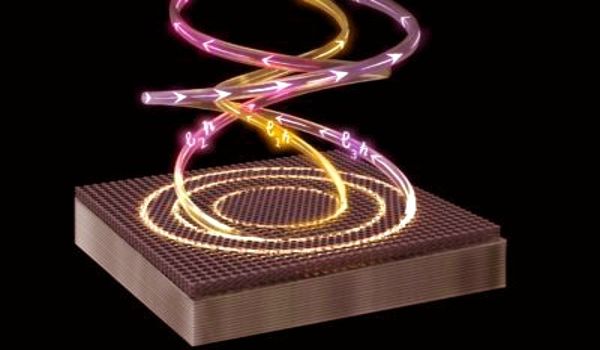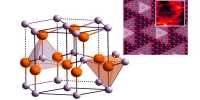Researchers have built a data transmission device capable of transmitting information 10 times faster than the USB. The new connection pairs high-frequency silicon chips with a polymer cable as thin as a strand of hair. One day, the technology will improve energy efficiency in data centers and lighten loads of electronics-rich spacecraft.
The report was discussed at the IEEE International Solid-State Circuits Conference. The lead author is Jack Holloway ’03, MNG ’04, who finished his Ph.D. at MIT’s Department of Electrical Engineering and Computer Science (EECS) last fall and is currently working for Raytheon. The co-authors are Ruonan Han, Associate Professor and Holloway Ph.D. Advisor at the EECS, and Georgios Dogiamis, Senior Researcher at Intel.
Data transfer system connects silicon chips with a hair’s-width cable. The system may one day boost energy efficiency in data centers and lighten loads of electronics-rich spacecraft.
There is a strong need for a snappy exchange of data, particularly in the era of remote work. “There’s a boom in the volume of knowledge exchanged amongst computer chips—cloud networking, internet, big data. And a lot of this is happening over traditional copper wire, “Ok, says Holloway. But copper wires, including those used in USB or HDMI cables, are power-hungry—especially when handling heavy data loads. “There is a profound trade-off between the volume of energy burned and the pace of information shared.” Despite a growing need for rapid data transmission (beyond 100 gigabits per second) through ducts longer than a meter, Holloway says the standard alternative was “increasingly bulky and expensive” copper cables.
An alternative to the copper wire is the fiber optic cable, but it has its own issues. Whereas copper wires use electrical signaling, fiber optics uses photons. This allows fiber optics to relay data easily and with little energy dissipation. But, usually speaking, silicone computer chips don’t play along with photons, rendering interconnections between fiber optic cables and computers a task. “There’s currently no way to efficiently generate, amplify, or detect photons in silicon,” says Holloway. “There are all kinds of expensive and complex integration schemes, but from an economics perspective, it’s not a great solution.” So, the researchers developed their own.

The new team connection draws on the positives of both copper and fiber optic ducts, while at the same time wiping out their disadvantages. “This is a perfect example of a complementary approach,” says Dogiamis. Their duct is made of acrylic rubber, which makes it thinner and potentially easier to produce than conventional copper cables. But when the polymer connection is operated with subterahertz electromagnetic signals, the transmission of heavy data load is much more energy-efficient than copper. The quality of the latest connection rivals that of the fiber optic, but it has a crucial advantage: “It’s directly compatible with silicone chips, without any special production,” says Holloway.
These low-cost chips were designed by the team to pair with the polymer tube. Typically, silicone chips are struggling to run at subterahertz frequencies. Yet the team’s latest chips produce certain high-frequency signals with enough power to send data directly to the duct. That a clean attachment of the silicone chips to the duct ensures that the entire device can be assembled using traditional, cost-effective processes, the researchers conclude.
The new relation also beats out copper and fiber optics in terms of distance. “The cross-section of our cable is 0.4 millimeters by a quarter millimeter,” says Han. “So, it’s really short, like a string of hair.” Despite its slim size, it can hold a large amount of data as it delivers signals over three independent parallel channels, divided by frequency. The overall bandwidth of the connection is 105 gigabits per second, about an order of magnitude faster than the copper-based USB cable. Dogiamis says that the cable could “face the problems of bandwidth as we see this megatrend toward more and more data.”
Han wants to make polymer pipes much easier in future work by bundling them together. “Then the data rate is off the map,” he says. “This could be a terabit per second, still at a low rate.”
Researchers say that “data-dense” applications, such as server farms, will soon follow new connections, as they could greatly reduce the heavy energy requirements of data centers. The relation may also be a key solution for the aerospace and automotive industries, which put a premium on lightweight, light-weight products. And one day, due to the flexibility and speed of the network, the link will replace consumer electronic cables in homes and offices. “It’s much less expensive than [copper or fiber optic] methods, with considerably larger bandwidth and smaller losses than traditional copper options,” says Holloway. “So, all-around high fives.”
This research has been funded, in part, by Intel, Raytheon, the Naval Research Laboratory, and the Naval Research Office.














